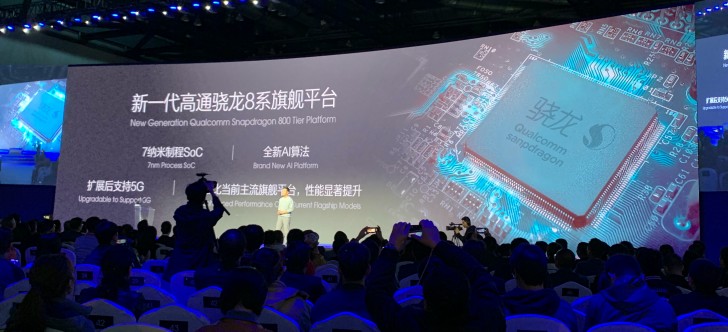From around 2009 to 2013, the U.S. intelligence community experienced crippling intelligence failures related to the secret internet-based communications system, a key means for remote messaging between CIA officers and their sources on the ground worldwide. The previously unreported global problem originated in Iran and spiderwebbed to other countries, and was left unrepaired — despite warnings about what was happening — until more than two dozen sources died in China in 2011 and 2012 as a result, according to 11 former intelligence and national security officials.
One of the largest intelligence failures of the past decade started in Iran in 2009, when the Obama administration announced the discovery of a secret Iranian underground enrichment facility — part of Iran’s headlong drive for nuclear weapons. Angered about the breach, the Iranians went on a mole hunt, looking for foreign spies, said one former senior intelligence official.
The mole hunt wasn’t hard, in large part, because the communications system the CIA was using to communicate with agents was flawed. Former U.S. officials said the internet-based platform, which was first used in war zones in the Middle East, was not built to withstand the sophisticated counterintelligence efforts of a state actor like China or Iran. “It was never meant to be used long term for people to talk to sources,” said one former official. “The issue was that it was working well for too long, with too many people. But it was an elementary system.”
“Everyone was using it far beyond its intention,” said another former official.
[…]
Though the Iranians didn’t say precisely how they infiltrated the network, two former U.S. intelligence officials said that the Iranians cultivated a double agent who led them to the secret CIA communications system. This online system allowed CIA officers and their sources to communicate remotely in difficult operational environments like China and Iran, where in-person meetings are often dangerous.
[…]
In fact, the Iranians used Google to identify the website the CIA was using to communicate with agents. Because Google is continuously scraping the internet for information about all the world’s websites, it can function as a tremendous investigative tool — even for counter-espionage purposes. And Google’s search functions allow users to employ advanced operators — like “AND,” “OR,” and other, much more sophisticated ones — that weed out and isolate websites and online data with extreme specificity.
According to the former intelligence official, once the Iranian double agent showed Iranian intelligence the website used to communicate with his or her CIA handlers, they began to scour the internet for websites with similar digital signifiers or components — eventually hitting on the right string of advanced search terms to locate other secret CIA websites. From there, Iranian intelligence tracked who was visiting these sites, and from where, and began to unravel the wider CIA network.
[…]
But the events in Iran were not self-contained; they coincided roughly with a similar debacle in China in 2011 and 2012, where authorities rounded up and executed around 30 agents working for the U.S. (the New York Times first reported the extirpation of the CIA’s China sources in May 2017). Some U.S. intelligence officials also believe that former Beijing-based CIA officer Jerry Lee, who was charged with spying on behalf of the Chinese government in May 2018, was partially responsible for the destruction of the CIA’s China-based source network. But Lee’s betrayal does not explain the extent of the damage, or the rapidity with which Chinese intelligence was able to identify and destroy the network, said former officials.
[…]
As Iran was making fast inroads into the CIA’s covert communications system, back in Washington an internal complaint by a government contractor warning officials about precisely what was happening was winding its way through a Kafkaesque appeals system.
In 2008 — well before the Iranians had arrested any agents — a defense contractor named John Reidy, whose job it was to identify, contact and manage human sources for the CIA in Iran, had already sounded an alarm about a “massive intelligence failure” having to do with “communications” with sources. According to Reidy’s publicly available but heavily redacted whistleblower disclosure, by 2010 he said he was told that the “nightmare scenario” he had warned about regarding the secret communications platform had, in fact, occurred.
Reidy refused to discuss his case with Yahoo News. But two former government officials directly familiar with his disclosure and the investigation into the compromises in China and Iran tell Yahoo News that Reidy had identified the weaknesses — and early compromise — that eventually befell the entire covert communications platform.
Reidy’s case was complicated. After he blew the whistle, he was moved off of his subcontract with SAIC, a Virginia company that works on government information technology products and support. According to the public disclosure, he contacted the CIA inspector general and congressional investigators about his employment status but was met with resistance, partially because whistleblower protections are complicated for federal contractors, and he remained employed.
Meanwhile, throughout 2010 and 2011, the compromise continued to spread, and Reidy provided details to investigators. But by November 2011, Reidy was fired because of what his superiors said were conflicts of interest, as Reidy maintained his own side business. Reidy believed the real reason was retaliation.
[…]
“Can you imagine how different this whole story would’ve turned out if the CIA [inspector general] had acted on Reidy’s warnings instead of going after him?” said Kel McClanahan, Reidy’s attorney. “Can you imagine how different this whole story would’ve turned out if the congressional oversight committees had done oversight instead of taking CIA’s word that he was just a troublemaker?”
Irvin McCullough, a national security analyst with the Government Accountability Project, a nonprofit that works with whistleblowers, put the issue in even starker terms. “This is one of the most catastrophic intelligence failures since Sept. 11,” he said. “And the CIA punished the person who brought the problem to light.”







